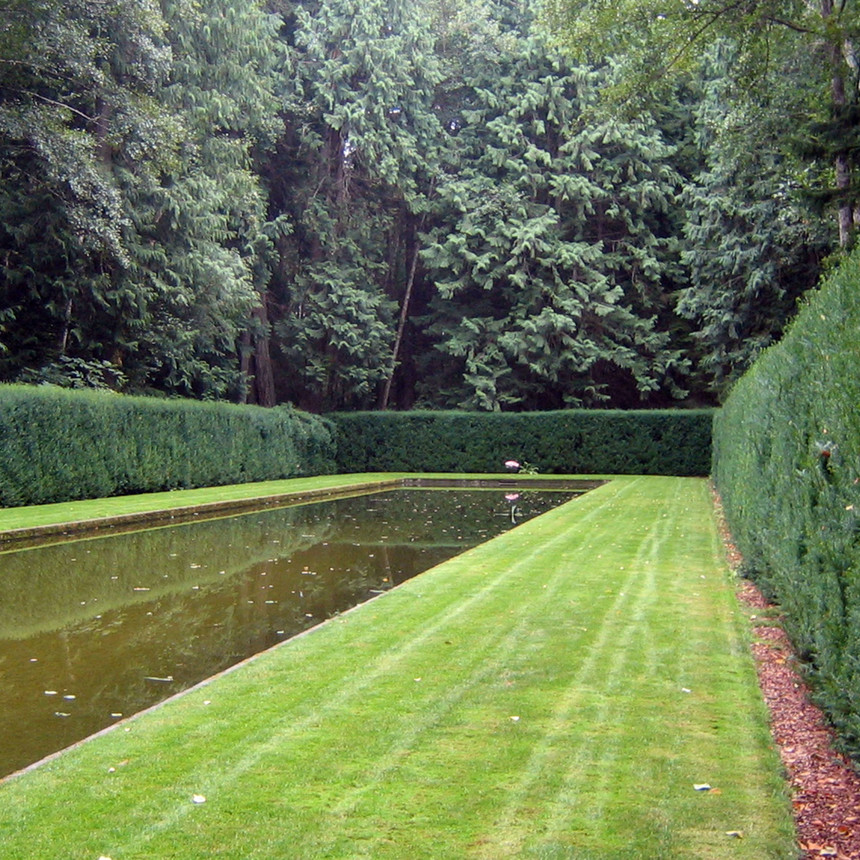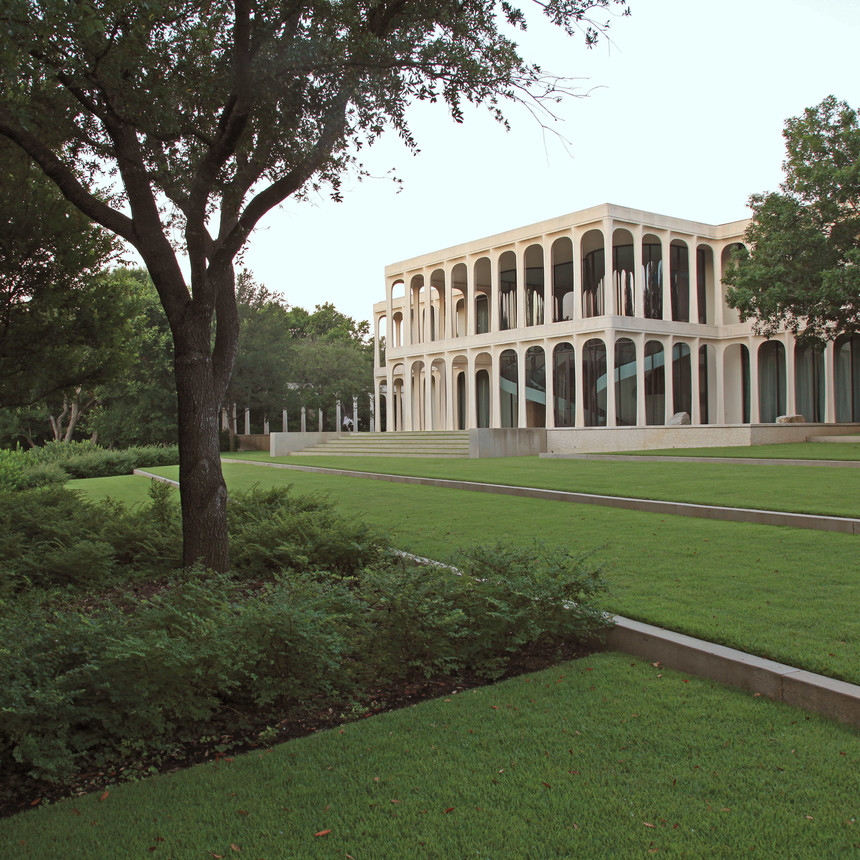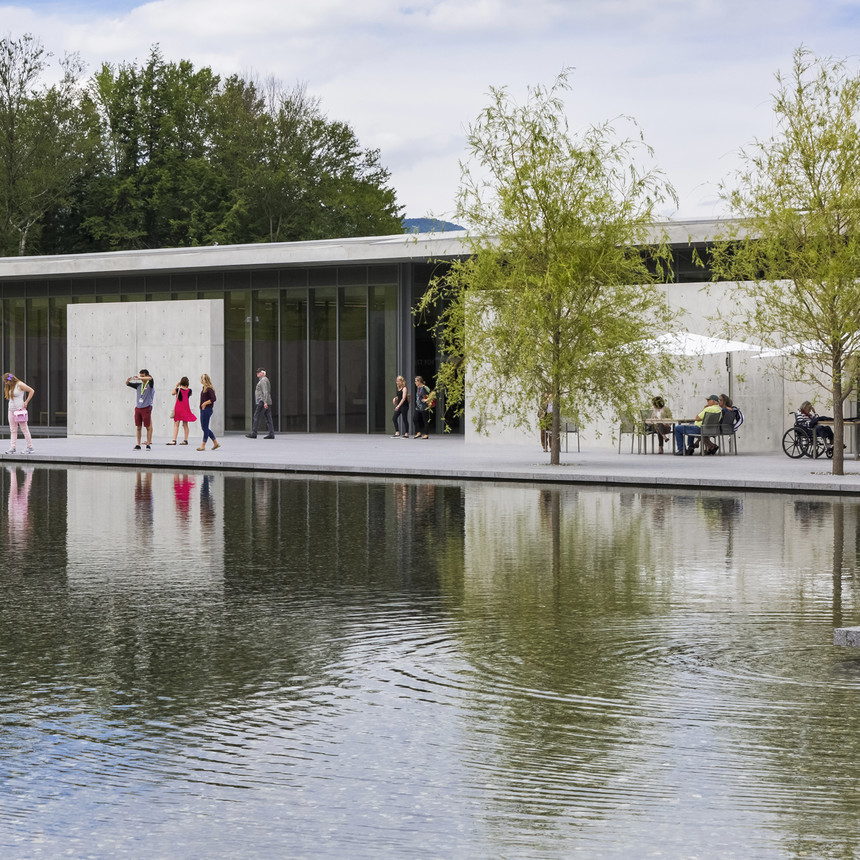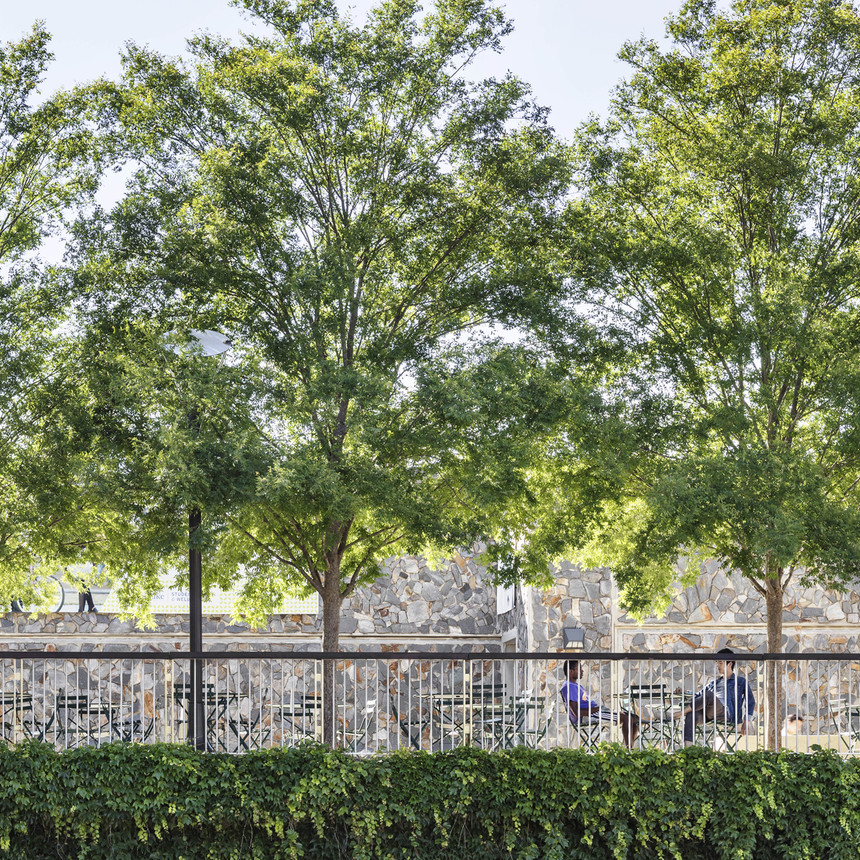Phoenix Art Museum
This shady courtyard, conceived as an oasis within Phoenix’s harsh climate and suburbanized block network, serves as both quiet refuge for the public and hard-working venue for outdoor sculpture, daily programming, and large events that support the Phoenix Art Museum’s larger public mission.
Summer temperatures in Phoenix are among the warmest of any metropolitan area in North America, and the city receives a mere 8.3 inches of rain annually. By contrast, winter conditions are irresistible. Our sculpture garden for the Phoenix Art Museum assumes a vibrant outdoor life for the city but the application of sustainable practices and sound design choices tempers its landscape for extreme heat and drought.
Our work frames art within everyday life in Phoenix. The design appropriates from monastic traditions to create a quadrangular space defined by perambulatory arcades. A traditional cloister exploits simple conditions of modified warmth or cooling breezes, alternating shade and shadow, horticultural fragrance, verdant color and texture, the delight of flowering plants, and seasonal change. The Sculpture Garden brings these traditions forward in a contemporary expression. Live oak trees offer canopy over the lawns and terraces, Chitalpas bloom in winter, and Acacias surround the garden as a constant horticultural frame unifying the garden edges.
Lines of Italian Cypress serve as tall hedges, further emphasizing the central lawn and providing backdrops for twin event terraces and interior gathering places. Paths extend through the Acacia grove and cross the lawn. A singular broad walkway provides a ceremonial promenade through the garden’s central space, formally connecting the street to the Museum building.
Location
Phoenix, AZ
Dates
2004-2006
Size
1 acre
Leadership
Team
Recognition
- Award of Excellence for Design, Boston Society of Landscape Architects
- “International Dialogue, Tod Willimas and Billie Tsien Add To Their Phoenix Art Museum and Show How Strong Architecture Can Keep Art in Focus,” by Martin Filler, House and Garden , May 2009





